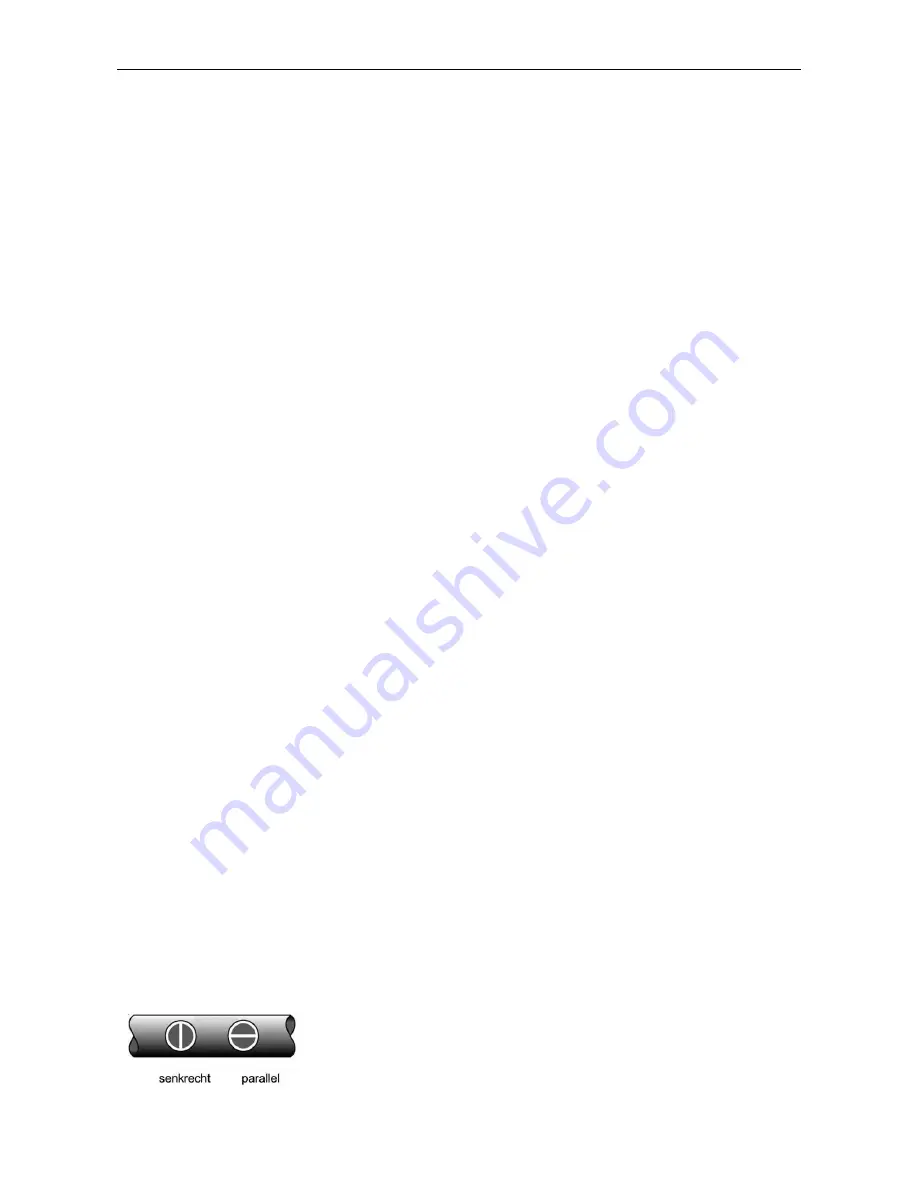
29
7. Measuring Technology
7.1 Measuring Methods
The gauge provides four different measuring methods.
1. Single point measurement: use the transducer to measure any point of the measuring object.
The reading shown is the thickness value.
2. Two point measurement (on cylindrical parts, e. g. pipes and tubs): perform two measurements
on the same point of the surface of object. During the second measurement, make sure the
black line on the transducer head (layer to separate the transmitter and receiver part of
transducer) is oriented in a 90 degree position to the axis of the pipe or tube. The smaller of the
two readings obtained represents the thickness value.
3. Multiple point measurement: perform several measurements on the measuring object within a
range of about 30mm in diameter. The smaller of the readings represents the thickness of the
measuring object.
4. Continuous measuring method: use the single point measuring method and take readings
continuously along the designated route. The intervals between measurements should be less
than 5mm. The smallest reading represents the thickness of the measuring object.
7.2 Measurement on Pipes and Tubes
During measurement, make sure to position the transducer’s separating layer perpendicular or
parallel to the longitudinal line of the pipe or tube. For pipes and tubes of large diameters, the
separating layer of transducer should be perpendicular to the longitudinal line the measuring object
whereas for small diameters, it is recommended to carry out measurement in both directions,
perpendicular and parallel to the longitudinal line of the measuring object. The minimum readout
represents the thickness of object at this measuring spot.



















